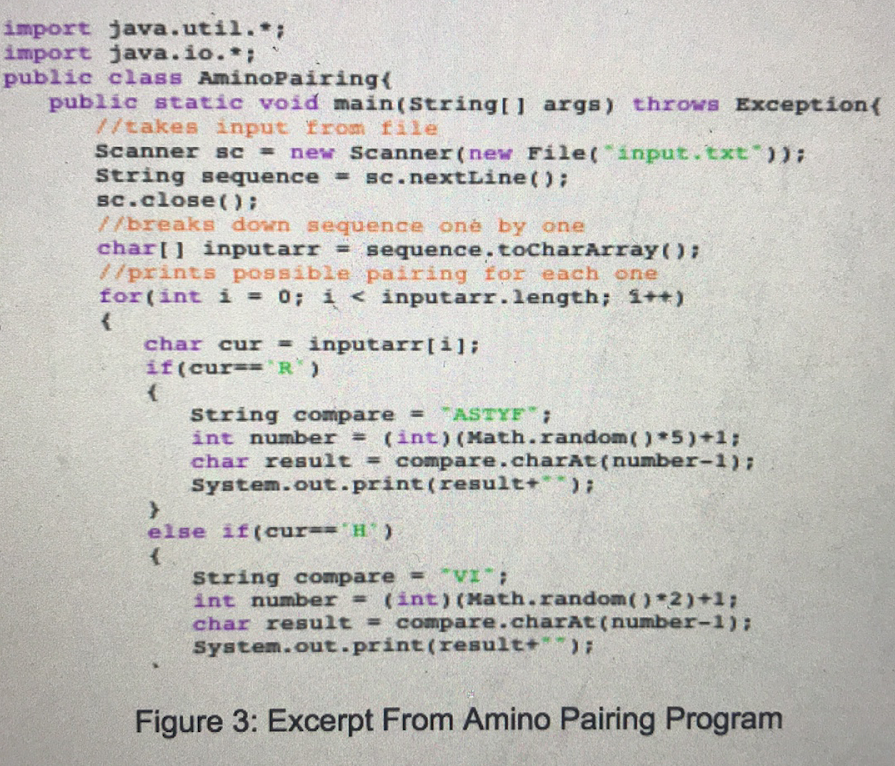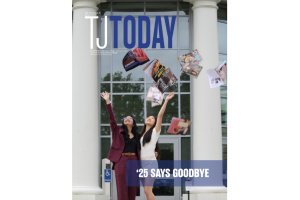Jefferson’s science fair goes virtual
This is an excerpt of sophomore Richa Gupta’s amino pairing code, which creates a sequence of amino acid pairing for any inputted sequence. “We decided to do a project to try and track a protein called cadherin-22, which accumulates in hypoxic cancer tumors,” Gupta said. “So we were trying to bind a fluorescent protein to cadherin-22.”
February 5, 2021
Jefferson held their annual science fair virtually using Blackboard Collaborate on Saturday, Jan. 30. In order to adapt to the virtual setting, many aspects of the science fair changed.
“We had the opportunity to present our research in front of three to five judges,” senior Shan Lateef said. “We were put into different breakout rooms depending on what category we were in, and we would present essentially a PowerPoint that was about 10 to 12 minutes long, and then judges would have an opportunity to ask questions.”
Some students found that a benefit of the virtual science fair was that it saved time.
“It was a lot more efficient,” sophomore Richa Gupta said. “You would log on for 20 minutes and then be done. Usually, you’d stay there for half a day, so it’d turn out a lot longer.”
However, the virtual aspect of the science fair also decreased student participation and engagement. Many people had a similar response to the one online classes received in that the virtual experience and the in-person experience were not the same.
“I would say a virtual science fair is kind of a double-edged sword,” Tao said. “On one hand, it’s less stress, but on the other hand, they can’t really replicate a physical science fair. You don’t really get the opportunity to meet face to face with these professional judges.”
Students also missed out on being able to see other students’ projects and learn from them.
“We didn’t really get to see what other students’ did,” Gupta said. “It was just you and the judges. So it was a bit more closed off in that sense.”
Because students weren’t at school, they had access to fewer resources. This limited many students’ project ideas and changed the type of projects they carried out.
“Because it was online, and we didn’t have access to many resources, we had to make sure everything we did in the project was online,” Gupta said. “It was a bit harder in that way, because we weren’t really able to test anything out. It had to be more theoretical.”
Lateef noticed this as well. Instead of the practical projects students usually took on for the science fair, more online-based or home-based projects were done.
“I saw a decrease in the number of traditional biology projects this year compared to previous years,” Lateef said. “I definitely saw a lot more computational projects, which was interesting.”
The virtual science fair actually opened doors to a larger community of people. This was especially true of the judges, and students had the chance to meet a variety of different scientists.
“I definitely noticed that a lot of judges were TJ alumni, which was very different from previous years,” Lateef said. “So we had the opportunity to not only present our research in front of scientists, but also scientists who are fellow alum of TJ, who are abroad and in different time zones, even. So I think it really brought a lot of connections that would not have been possible or feasible in other years prior.”
While this year’s virtual science fair had both advantages and disadvantages such as less stress but also fewer available resources, many students preferred the in-person science fair.
“If I had the choice I would… go through the legitimate process of creating a poster and then presenting it in front of the judges rather than sitting in front of a computer and going through slides,” Tao said. “But this is obviously a necessary, modified version.”






